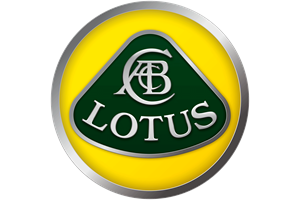


This edition of the Lotus Evora 3.5 V6 is the 6 speed / Manual version and was first brought out in 2009. This was at around the same time as the introduction of the 2010 Hennessey Venom GT 6.2L V8 and the 2010 Bugatti Veyron 8.0 litre W16 Super Sport.This particular Lotus Evora has a 3456cc Naturally Aspirated Petrol powerplant with 6 cylinders in a V formation.
The Evora shares its Petrol V6 engine configuration with the likes of the 2014 Radical RXC 3.5 V6 Twin Turbo and the 2015 Radical RXC Turbo 500 3.5 V6. If you're looking for other fast cars which share the Evora's Rear Wheel Drive, Coupe combination then how about the 1982 Fiat X1/9 1.5 8V or the 1965 Aston-Martin DB6 1965.
Weighing in at 1350 kgs (2976 lbs) this makes the Lotus Evora 3.5 V6 in the same weight category as the 2021 Aston-Martin Valkyrie Coupe 6.5 V12 or the give or take 50kg.
![Toyota Corolla GR Morizo Edition 1.6 Turbo - [2023] image Toyota Corolla GR Morizo Edition 1.6 Turbo - [2023] image](/editionimages/2397.webp)
The Lotus Evora shares the same bhp with the 2023 Toyota Corolla GR Morizo Edition 1.6 Turbo (300 bhp)
In terms of power the 3456cc 24V V6 engine produces 276 bhp (205 kW) @ 6400 rpm similar to the 2023 Toyota Corolla GR Morizo Edition 1.6 Turbo (300 bhp) or the 2023 Porsche Cayenne Coupe E-Hybrid 3.0 V6 Turbo (300 bhp).
The Naturally Aspirated V6 throws out 252 lb-ft (341.6 Nm) @ 4700 rpm placing it with cars of similar torque performance figures such as the 2023 Toyota Corolla GR Circuit Edition 1.6 Turbo (273 lb-ft) or the 2022 Toyota Corolla GR 1.6 Turbo (273 lb-ft).
If one combines the weight with power or torque performance for the Lotus Evora you can get a better idea of it's real world performance.
![BMW Alpina B3 3.0 Bi Turbo - [2006] image BMW Alpina B3 3.0 Bi Turbo - [2006] image](/editionimages/148.jpg)
The 2006 BMW Alpina B3 3.0 Bi Turbo (229.2 bhp per ton) has similar Bhp Per Ton stats as the Lotus Evora.
The Lotus Evora has a Power to weight ratio of 204.4 bhp per ton and 186.6 lb-ft per ton. Bhp Per Ton figures of the 2009 Evora competing with the 2006 BMW Alpina B3 3.0 Bi Turbo (229.2 bhp per ton) or the 2017 Maserati GranCabrio Sport 4.7 V8 (229.2 bhp per ton).
If you agree with the late great Carroll Shelby then arguably an even better indicator of potential performance, Torque. Use weight as well and you end up with - Torque per ton, with the Lotus Evora generating around 186.6 lb-ft per ton. If you're curious as to what other cars have as much torque to weight then look no further than the 2014 Peugeot 308 GT 2.0 Blue HDI 180 (211.4 lb-ft per ton) or the 1964 Chevrolet Chevy II Nova SS 283 V8 Turbo Fire (211.4 lb-ft per ton).
With a 0-60mph time of 4.90 secs or a 0-100km/h (0-62mph) of 5.1 secs, this made the Lotus Evora 3.5 V6 as fast as the 2023 Toyota Corolla GR Morizo Edition 1.6 Turbo (4.90 secs) the 2022 Mini Cooper Countryman John Cooper Works 2.0 Turbo (4.90 secs) the 2021 Ford Mustang GT 5.0 V8 (4.90 secs) the or the 2020 Honda Civic Type R 2.0 16V Touring (4.90 secs). This Lotus Evora 3.5 V6 is also faster than the 2023 Toyota Corolla GR Circuit Edition 1.6 Turbo (5.00 secs) the 2022 Toyota Corolla GR 1.6 Turbo (5.00 secs) the 2022 Honda Civic Type R 2.0 Turbo FL5 (5.00 secs) the and the 2020 Mini Cooper John Cooper Works GP (5.00 secs).
When talking about the performance of the Lotus Evora on the drag strip it can reach a quarter mile in an estimated 13.89 secs @ 98.5 mph. Similar performance down the quarter mile can be found with the the 2006 Volvo S80 4.4 V8 AWD (13.83 secs), the 1990 Honda NSX 3.0 V6 (13.84 secs), and the 2007 Bentley Brooklands 2d (13.85 secs).
Modern performance cars are often artificially restricted to 155mph. The 2009 version of the Lotus Evora 3.5 V6 has a maximum speed of 160mph.
If maxing out your car on the AutoBahn is your thing and you're wondering what's faster than the 2009 Lotus Evora 3.5 V6 then how about the 2018 Porsche Boxster T 2.0 Turbo PDK 982 (171 mph), the 2018 Porsche Boxster T 2.0 Turbo 982 (171 mph), or the 2013 Jaguar F Type S 3.0 V6 (171 mph).










Mercedes A Class 45 AMG 2.0 Turbo
Engine: Turbo Petrol | 1991cc 16v St4
Top Speed: 155 mph
0-60mph: 4.60 seconds

Ford Escort XR3i
Engine: Naturally Aspirated Petrol | 1796cc 16v St4
Top Speed: 202.7 kph
0-100kph: 8.8 seconds



















